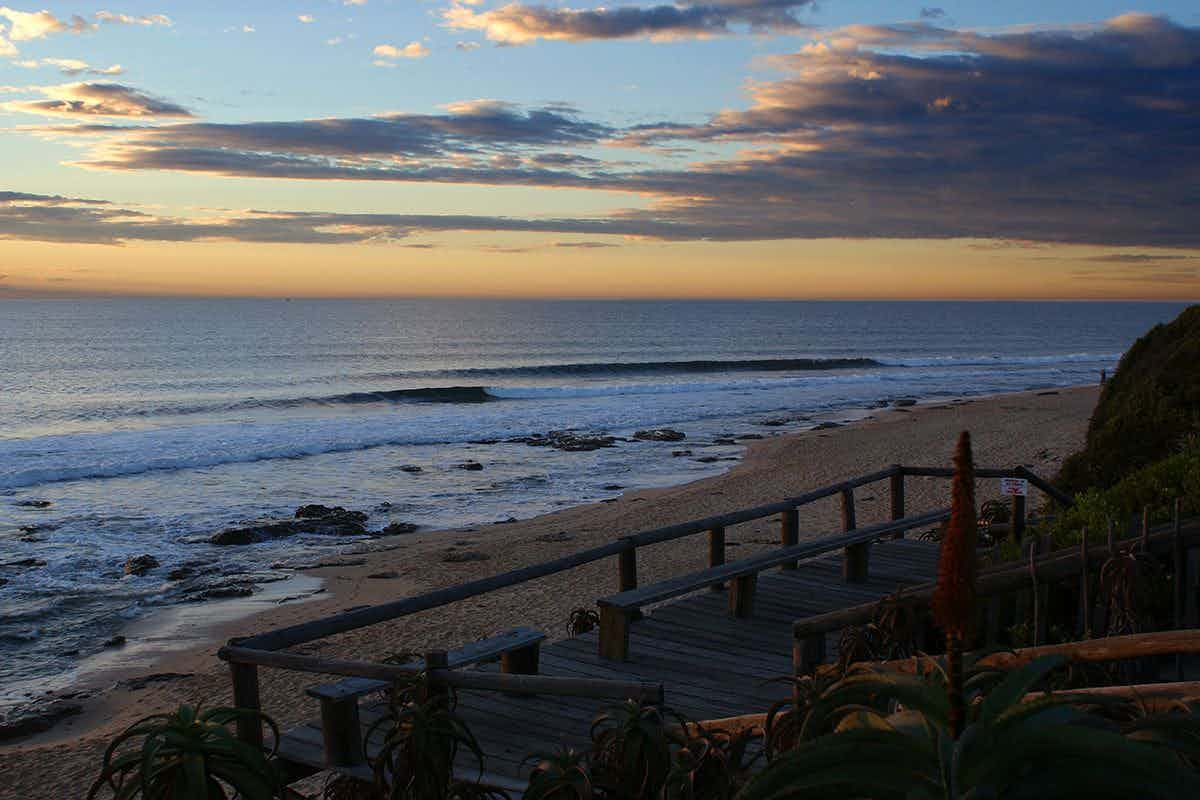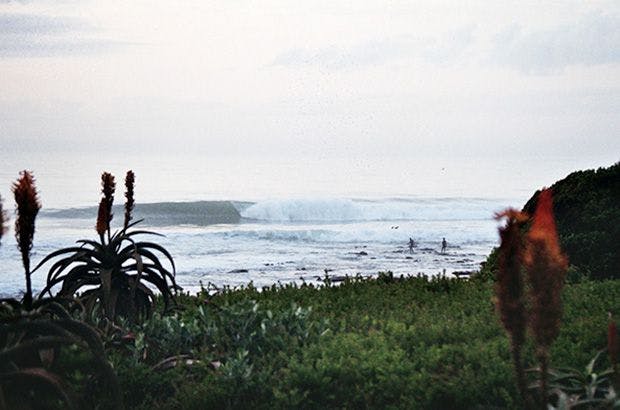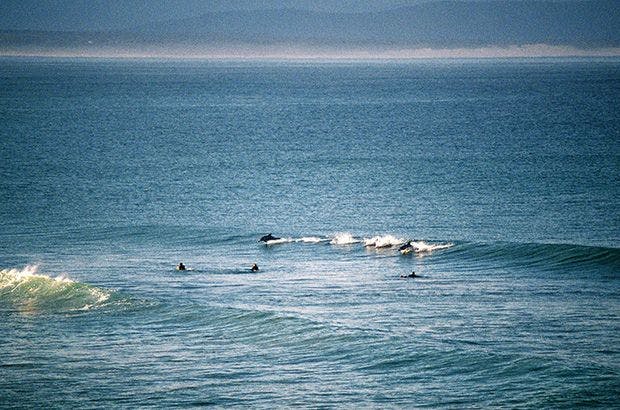TravelDeparture Gate: J-Bay

It’s somewhere near the top of most surfers bucket list, whether you’re a regular or a goofy footer. In fact if you’re a regular footer then there’s a fair chance that it’s at the very top of your bucket list, and by quite a long way, because Jeffreys Bay (or J-Bay as it’s affectionately known) is widely regarded as the world’s best right hand point break.

Sitting on the western edge of South Africa’s Eastern Cape Province, just before the coast of the African continent turns north east at Port Elizabeth, Jeffreys Bay sits inside one of the larger crescent shaped bays that scallop along the southern coast of South Africa – many sheltering their own array of brilliant point breaks. During the winter months powerful swells generated in the roaring forties of the Southern Ocean approach from the south west and wrap around Cape St Francis and into the large bay. Many of the low pressure storm systems that generate these swells pass close to the coast and as a result good swells are often followed swiftly by strong south west winds, however the Kouga and Baviaanskloof mountain ranges just inland deflect and funnel these winds so that they blow offshore at J-Bay. During the early season (April, May and June) the warm northerly Berg winds often blow down from the mountains, pushing chop into the barrel and earning themselves the title of “the Devil wind”. Come July and August though when winter has well and truly set in, large and powerful SW swells consistently wrap into Jeffreys Bay to be met by offshore winds, and the sections of the town’s most famous point really fire in the often-perfect conditions.

There are many good waves in Jeffreys Bay and many more a short distance either side of town, but the point that many surfers travel half way around the world for a chance of surfing is Supertubes. Many of the famous photos of J-Bay that have captured the imagination of thousands of surfers were taken from the look-out and boardwalk at the end of Pepper Street, which is also where the contest site for the annual J-Bay Open is constructed. Narrow, fynbos covered sand dunes lead down onto a beach that gives way to basalt reef at the water’s edge. This reef sticks out into the sea in long fingers that trap sand inbetween them, creating both a perfect point break and a difficult, mussel-encrusted, entry and exit when you want to go surfing. Getting in or out from a surf at J-Bay without leaving some skin on “the bricks” is no mean feat, and another reason besides the often cold water to wear a pair of wetsuit boots.

Looking up to the top of the point from the end of Pepper Street you can see Boneyards. Boneyards is a fast right wall that often sections (slightly unpredictably) and throws up opportunities for barrels as the wave wraps into the point. It breaks bigger and heavier than the rest of the named sections, and on a larger swell with a longer period it links right into Supertubes.
Supertubes is the jewel in J-Bay’s crown. The nearest thing to a keyhole is, near enough, directly in front of the main take-off spot for Supertubes; you’ll need to make a well timed dash and jump or paddle to make it out (the keyhole has a good lump of reef in the middle of it that you’ll also need to dodge) and avoid being swept down the point by a set or ruining somebody’s wave. Supertubes is a fast wave. Really fast. From take-off until the moment that it sections or leaves you behind, Supers offers a long and powerful wall with hollow sections giving those with the skill the opportunity for a high-line barrel. Don’t be fooled by the locals and top 34 though – for many surfers anything other than a cut-down and the wave will leave you behind. From the moment that you take-off it is pedal to the metal to make the most out of this 250 meter or so long wave. As the wave runs down to the Impossibles section in front of the boardwalk lookout the chances for a barrel increase with the chances of making it out of the barrel decreasing. Waves don’t often let a surfer through Impossibles (unless you’re Joel Parkinson), beyond which the section known as Tubes is waiting. Tubes is a short, intense barreling section (the name says it all) that works best on a medium sized swell and that runs into Point, a long wave that is slower than its predecessors. Point has nice shape and can hold some good size as it wraps into a cove, finishing up in front of a small parking lot and a park. Surfing a wave right the way through from Boneyards to Point is the dream of many visiting surfers, however the kilometer-odd long ride eludes the vast majority, and as soon as the realization that it’s not going to happen dawns on them, they simply settle for getting some of the best right handers of their lives at one of the sections of J-Bay.

J-Bay is a beautiful wave in a beautiful location. Whilst the town itself has developed rapidly over the years the wave remains the same (which unfortunately can’t be said for Bruce’s Beauties, the wave just down the road in St Francis made famous by Bruce Brown’s Endless Summer movie) and one wave alone is worth the trip. J-Bay can often be crowded, particularly when good, and although the locals no longer wear white rash vests or visibly regulate the line-up, you’ll probably notice when they paddle out and you should probably lower your expected wave-count accordingly, and with fair reason. The main locals that surfers at J-Bay are wary of though are the big grey ones – whilst enormous pods of dolphins often cruise through the line-up at dawn and dusk, the fear of great whites is entirely justified, particularly if you’ve scratched yourself on the bricks on your way in or out of the water. If you’re not a fan of the wildlife in the water then of course the wildlife out of the water in South Africa is a different story, so if you’re unlucky enough to come up against a flat spell or some devil winds then the nearby game reserves and parks will allow you to distract yourself with lions, elephants and zebras for a few days whilst you wait for the swell to fill in.
WHERE: Port Elizabeth (PLZ) via Cape Town (CPT) or Johannesburg (JNB)
WHEN: Southern Hemisphere winter (May – September)
WHY: Arguably the world’s best right hand point breaks.
HOW: Beefed up shortboard (to deal with the speed and paddling) and a step-up.
https://youtu.be/dG4WfSnjQ6U